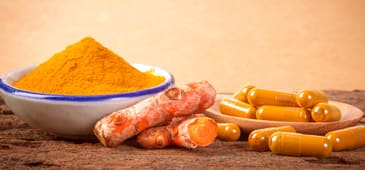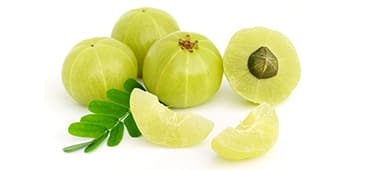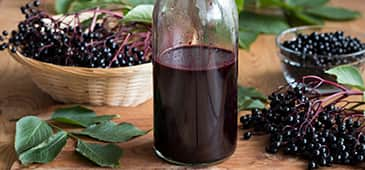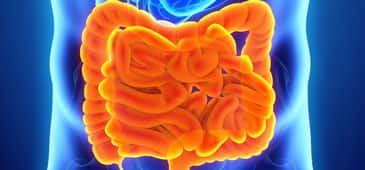
What's hot
What's hot
News flashes are posted here frequently to keep you up-to-date with the latest advances in health and longevity. We have an unparalleled track record of breaking stories about life extension advances.
Curcumin could help combat stomach cancer
 April 29 2019. Research reported in Epigenomics reveals a potential role for curcumin and other natural compounds in the prevention or treatment of stomach cancer. “Here, we review the recent findings on histone acetylation in gastric cancer and discuss the effects of nutrients and bioactive compounds on histone acetylation and their potential role in the prevention and treatment of this type of cancer,” write Danielle Queiroz Calcagno of the Federal University of Pará and colleagues
April 29 2019. Research reported in Epigenomics reveals a potential role for curcumin and other natural compounds in the prevention or treatment of stomach cancer. “Here, we review the recent findings on histone acetylation in gastric cancer and discuss the effects of nutrients and bioactive compounds on histone acetylation and their potential role in the prevention and treatment of this type of cancer,” write Danielle Queiroz Calcagno of the Federal University of Pará and colleagues
Histones are proteins that exist in the cells’ nuclei which organize DNA into structural units known as nucleosomes. A nucleosome is made of DNA coiled around the histones, which compact the DNA. Research suggests that histone modification, such as acetylation, causes changes in gene expression that influence the development of some cancers. By comparing patterns of histone modification in stomach cells derived from healthy individuals and people with stomach cancer, it was found that stomach cancer patients had alterations in the expression of enzymes known as histone acetyltransferases and histone deacetylases, which can affect the structure and integrity of the genome in stomach cancer.
Compounds found to play a role in modulating histone activity included curcumin, cholecalciferol, resveratrol, quercetin, garcinol from Garcinia indica, and sodium butyrate. "These compounds can favor the activation or repression of genes involved in the development of stomach cancer by promoting or inhibiting histone acetylation," Dr Calcagno explained.
"We undertook a vast review of the scientific literature on all nutrients and bioactive compounds with the potential to prevent or treat stomach cancer and found that curcumin is one of them," she concluded. "We now plan to clarify the anticancer and epigenetic effects of bioactive compounds derived from plants in the Amazon, such as açaí and nanche or hogberry, with a view to their future use in the prevention and treatment of stomach cancer."
—D Dye
Amla improves cholesterol, triglycerides in dyslipidemic patients
 April 26 2019. Results from a double-blind trial reported on January 22, 2019 in BMC Complementary and Alternative Medicine revealed a benefit for amla, also known as Indian gooseberry, in men and women with unhealthy lipid levels that increase the risk of cardiovascular disease.
April 26 2019. Results from a double-blind trial reported on January 22, 2019 in BMC Complementary and Alternative Medicine revealed a benefit for amla, also known as Indian gooseberry, in men and women with unhealthy lipid levels that increase the risk of cardiovascular disease.
Ninety-eight participants received 500 milligrams (mg) amla extract or a placebo twice daily for 12 weeks. Subjects were instructed to exercise at least four days per week and consume a healthy diet. Prior to beginning the treatment phase, and on days 28, 56 and 84, blood samples were analyzed for total cholesterol, high-density lipoprotein (HDL) cholesterol, low-density lipoprotein (LDL) cholesterol, very low-density lipoprotein (VLDL) cholesterol, triglycerides, coenzyme Q10 (CoQ10) and other factors.
After 12 weeks, total, LDL and VLDL cholesterol, and triglycerides were significantly reduced among participants who received amla compared to changes experienced by those who received a placebo as well as in comparison with pretreatment levels. Seventy-three percent of those who received amla experienced a significant reduction in total cholesterol, 53% achieved normal levels of LDL, 83% achieved normal VLDL levels and 90% experienced a significant reduction in triglycerides. Plasma atherogenic index (a ratio of triglycerides to HDL cholesterol that is greater among individuals at risk of coronary heart disease), was lower in the amla-treated group at the end of the study. There was also trend toward lower fasting blood glucose among those who received amla. There were no significant differences observed between the subjects’ final CoQ10 levels.
The authors note the need for an alternative to statin drugs that can have side effects that include a decrease in CoQ10 levels. “A single agent to reduce cholesterol as well as triglycerides is rare,” they conclude. “Cholesterol reduction is achieved without concomitant reduction of CoQ10, in contrast to what is observed with statins.”
—D Dye
How elderberry fights flu
 April 24 2019. The March 2019 issue of the Journal of Functional Foods published the findings of researchers at the University of Sydney of a mechanism by which elderberries combat influenza. Elderberry juice has long been used to help relieve flu symptoms, however, its mechanisms in influenza had not been identified.
April 24 2019. The March 2019 issue of the Journal of Functional Foods published the findings of researchers at the University of Sydney of a mechanism by which elderberries combat influenza. Elderberry juice has long been used to help relieve flu symptoms, however, its mechanisms in influenza had not been identified.
Dr Golnoosh Torabian and colleagues administered elderberry juice serum and the elderberry compound cyanidin 3-glucoside to cultured cells prior to, during and after they had been infected with the influenza virus. The researchers observed a direct antiviral effect in association with both elderberry juice and its active compound.
"What our study has shown is that the common elderberry has a potent direct antiviral effect against the flu virus,” Dr Torabian stated. “It inhibits the early stages of an infection by blocking key viral proteins responsible for both the viral attachment and entry into the host cells."
While the antiviral effects of elderberry during the early phase of infection were mild, it showed stronger effects during the post-infection phase. "This observation was quite surprising and rather significant because blocking the viral cycle at several stages has a higher chance of inhibiting the viral infection,” noted coauthor Dr Peter Valtchev.
"In addition to that, we identified that the elderberry solution also stimulated the cells to release certain cytokines, which are chemical messengers that the immune system uses for communication between different cell types to coordinate a more efficient response against the invading pathogen," added Fariba Deghani, of the University of Sydney’s Centre for Excellence in Advanced Food Enginomics.
Although elderberry was demonstrated to have a direct antiviral effect, the authors concluded that “Elderberry exhibits multiple modes of therapeutic action against influenza infection.”
—D Dye
Blueberry shows bone-protective effects
 April 22 2019. Research reported on April 1, 2019 in FEBS Open Bio revealed a role for blueberries in the prevention or management of osteoporosis.
April 22 2019. Research reported on April 1, 2019 in FEBS Open Bio revealed a role for blueberries in the prevention or management of osteoporosis.
Using cultured bone cells known as osteocytes in which oxidative stress was induced by serum deprivation, the administration of blueberry juice containing various amounts of polyphenols resulted in prevention of oxidative stress-induced apoptosis (a type of programmed cell death) and a reversal of factors involved in the activation of osteoclasts (which break down bone) and bone resorption. Juice containing the lowest concentrations of polyphenols decreased reactive oxygen species by approximately 25% after four hours, while the highest concentration was associated with a 50% decline compared to untreated serum-starved cells. When the effects of blueberry juice and a powdered blueberry extract that contained the same amount of soluble polyphenols were compared, no significant difference was observed. It was discovered that blueberry juice and blueberry extract increased the expression of sirtuin type 1 (SIRT1), which is involved in apoptosis regulation.
The research team also found that the juice prevented oxidative-stress induced cell cytotoxicity in bone marrow mesenchymal stromal cells, which are considered to be important for cell therapy in bone disorders because of their ability to differentiate into various tissues, including bone.
“The results of this study demonstrate, for the first time, in osteocytes, cells in close contact with blood capillaries and considered the major regulators of bone remodeling, a significant relationship between the antioxidant activity of blueberries and molecular events related to apoptosis and expression of osteoclastogenic factors induced by oxidative stress, write Vladana Domazetovic and colleagues at the University of Florence.
“Beneficial anabolic effects of blueberries in bone tissue have been reported in animal studies, which suggest blueberries to be a useful supplement for the prevention and/or management of osteoporosis and the osteogenic process,” they conclude.
—D Dye
Antioxidant combo improves inflammation in heart failure patients
 April 15 2019. Results from double-blind, crossover study reported on April 9, 2019 at the American Physiological Society's (APS) annual meeting at Experimental Biology 2019 in Orlando revealed that the intake of three antioxidant compounds helped control inflammation and boost nitric oxide in heart failure patients with preserved ejection fraction.
April 15 2019. Results from double-blind, crossover study reported on April 9, 2019 at the American Physiological Society's (APS) annual meeting at Experimental Biology 2019 in Orlando revealed that the intake of three antioxidant compounds helped control inflammation and boost nitric oxide in heart failure patients with preserved ejection fraction.
Heart failure occurs when the heart fails to pump blood adequately. About half of those with heart failure have preserved (normal) ejection fraction, which is a measure of the percentage of blood ejected from the left ventricle with each heartbeat. In heart failure with preserved ejection fraction, the ventricle is unable to relax and fill properly.
Sixteen patients were given a placebo or a combination of 600 milligrams alpha lipoic acid, 1,000 milligrams vitamin C and 600 international units vitamin E, and assessments of large blood vessel and microvascular function were conducted. Subsequently, those who had received antioxidants were crossed over to the placebo group and participants in the placebo group were given antioxidants, followed by another assessment of vessel function.
Flow mediated dilation, a measure of large vessel function, improved following administration of antioxidants. Additionally, C-reactive protein (CRP), a marker of inflammation, declined, and biologically available nitric oxide (which helps the blood vessels dilate) increased following antioxidant supplementation.
The study is the first to evaluate the ability of antioxidants to improve peripheral vascular function in heart failure patients with preserved ejection fraction. “This study has identified the efficacy of an acute, over-the-counter dose of vitamins C, E, and alpha lipoic acid to mitigate vascular inflammation and improve conduit artery endothelium-dependent vasodilation in patients with heart failure with preserved ejection fraction, providing new insight into the mechanisms that govern peripheral vascular dysfunction in this patient group,” authors Stephen M. Ratchford and colleagues conclude.
—D Dye
Garlic supplementation could help older individuals maintain cognitive function
 April 12 2019. Results from a study reported on April 8, 2019 at the American Physiological Society's annual meeting suggest a benefit for supplementing with the garlic compound allyl sulfide among older people who wish to maintain their cognitive abilities.
April 12 2019. Results from a study reported on April 8, 2019 at the American Physiological Society's annual meeting suggest a benefit for supplementing with the garlic compound allyl sulfide among older people who wish to maintain their cognitive abilities.
“Allyl sulfide, an organic sulfur compound in garlic, has many health benefits and is known for its detoxifying agents,” note authors Jyotirmaya Behera, Kimberly E. Kelly and Neetu Tyagi, PhD of the University of Louisville.
The team administered allyl sulfide, a compound found in garlic, to 24-month-old mice and compared them to four and 24-month-old mice that did not receive allyl sulfide. Older mice that received the compound demonstrated better short and long-term memory and spatial memory, in addition to healthier intestinal bacteria in comparison with untreated mice of the same age. "The diversity of the gut microbiota is diminished in elderly people, a life stage when neurodegenerative diseases such as Alzheimer's and Parkinson's develop and memory and cognitive abilities can decline," Dr Tyagi stated. "We want to better understand how changes in the gut microbiota relate to aging-associated cognitive decline."
Brains of mice that received allyl sulfate had greater expression of a gene known as neuronal-derived natriuretic factor (NDNF), which researchers at the University of Louisville recently determined was necessary for short and long-term memory consolidation. Delivery of recombinant NDNF protein to the brains of older mice that were not treated with allyl sulfate improved age-related cognitive decline. Furthermore, oral allyl sulfide administration was associated with gut production of hydrogen sulfide gas which protects against intestinal inflammation.
Allyl sulfide may support memory consolidation by restoring gut bacteria. "Our findings suggest that dietary administration of garlic containing allyl sulfide could help maintain healthy gut microorganisms and improve cognitive health in the elderly," Dr Behera concluded.
—D Dye
JAMA reports positive effects for vitamin D supplementation in cancers of the digestive tract
 April 10 2019. The April 9, 2019 issue of the Journal of the American Medical Association (JAMA) reported results from two trials that revealed benefits for vitamin D supplementation in the treatment of digestive system cancers.
April 10 2019. The April 9, 2019 issue of the Journal of the American Medical Association (JAMA) reported results from two trials that revealed benefits for vitamin D supplementation in the treatment of digestive system cancers.
The SUNSHINE trial included 139 patients whose metastatic colorectal cancer was treated with chemotherapy. Seventy patients received 400 IU vitamin D and 69 received 4,000 IU vitamin D3 daily. Participants who received the higher dose of vitamin D experienced 13 months of progression-free survival compared to 11 months for those who were given the standard dose. "To our knowledge, this study is the first completed randomized clinical trial of vitamin D supplementation for treatment of advanced or metastatic colorectal cancer," stated first author Kimmie Ng, MD, MPH. "It identifies a cost-effective, safe, and easily accessible agent as a potential new treatment for metastatic colorectal cancer."
In the AMATERASU trial, 417 patients who underwent surgery for digestive tract cancers, which included cancers of the esophagus, stomach, small intestine, colon and rectum, received 2,000 IU vitamin D per day or a placebo. While unadjusted five-year relapse-free survival and overall survival were not significantly different between the groups, JAMA editorialists Elizabeth Barry and colleagues note that “The study had a treatment allocation imbalance for age, and post hoc age-adjusted analysis revealed a statistically significant benefit in favor of supplementation.”
In the accompanying editorial whose title asks the question, “Vitamin D as Cancer Therapy?” Dr Barry and associates conclude, “The SUNSHINE and AMATERASU clinical trials reported in this issue of JAMA provide new information regarding the potential use of vitamin D among patients with colorectal cancer and other luminal gastrointestinal malignancies. Confirmatory trials are needed to evaluate these preliminary findings, ideally with longer follow-up to obtain better estimates of effects on survival as well as biological measurements to clarify underlying mechanisms.”
—D Dye
Vitamin B12 could help patients with inherited Parkinson’s disease
 April 08 2019. Research reported on March 12, 2019 in Cell Research suggests a role for vitamin B12 in the treatment of hereditary Parkinson’s disease.
April 08 2019. Research reported on March 12, 2019 in Cell Research suggests a role for vitamin B12 in the treatment of hereditary Parkinson’s disease.
Parkinson’s disease arises sporadically in most patients diagnosed with the disease. The majority of individuals with the inherited form as well as some people with sporadic forms have mutations in a gene that encodes the enzyme LRRK2. These mutations increase the gene’s kinase activity, which catalyzes a biochemical reaction known as phosphorylation. This hyperactivity of LRRK2 kinase is a cause of neurotoxicity that occurs in Parkinson’s disease. Although there are inhibitors of LRRK2’s kinase activity, they are associated with side effects or uncertain clinical results.
In the current study, Iban Ubarretxena-Belandia of the Biofisika Institute at the University of the Basque Country in Leioa, Spain and colleagues identified 5′-deoxyadenosylcobalamin (AdoCbl, a form of vitamin B12) as an inhibitor of LRRK2 kinase activity. Treatment of cultured cells and brain tissue with this form of vitamin B12 inhibited LRRK2 kinase activity. In cultured rodent neurons, and in roundworms and fruit flies that expressed LRRK2 mutations, the vitamin inhibited neurotoxicity. And in mouse models of inherited Parkinson’s disease, it alleviated deficits in the release of dopamine, a neurotransmitter whose production is diminished by Parkinson’s disease-induced neurodegeneration.
The discovery "constitutes a huge step forward because it is a neuroprotective vitamin in animal models and has a mechanism unlike that of currently existing inhibitors,” Dr Ubarretxena-Belandia stated. “So, it could be used as a basis to develop new therapies to combat hereditary Parkinson's associated with pathogenic variants of the LRRK2 enzyme.”
—D Dye
Severe vitamin D deficiency predicts mortality in cirrhosis patients during more than a year of follow-up
 April 05 2019. Results from a meta-analysis published on March 29, 2019 in Clinical Research in Hepatology and Gastroenterology found an association between severe vitamin D deficiency in patients with cirrhosis of the liver and a significantly greater risk of dying during follow-up periods ranging from 147 to 419 days.
April 05 2019. Results from a meta-analysis published on March 29, 2019 in Clinical Research in Hepatology and Gastroenterology found an association between severe vitamin D deficiency in patients with cirrhosis of the liver and a significantly greater risk of dying during follow-up periods ranging from 147 to 419 days.
Researchers at First Affiliated Hospital of Chongqing Medical University selected eight studies that included a total of 1,339 men and women with liver cirrhosis for the meta-analysis. Study reports included subjects’ serum 25-hydroxyvitamin D levels and provided data concerning mortality from all causes. While vitamin D levels of less than 20 nanograms per milliliter (ng/mL) were categorized as deficient, severe deficiency was defined as a level of less than 10 ng/mL.
Being severely deficient in vitamin D was associated with a 79% greater risk of dying from any cause during follow-up in comparison with having higher levels of the vitamin. Deficiency of less than 6 ng/mL was associated with an even greater risk. Severe vitamin D deficiency was also associated with cirrhosis severity.
“The association between severe vitamin D deficiency and the risk of mortality suggests that serum 25-hydroxyvitamin D level can be used as a new marker to identify liver cirrhosis patients at high risk of mortality and that vitamin D supplementation may be helpful for reducing the risk of mortality,” Fuwei Yang and colleagues write.
“Our meta-analysis showed that severe vitamin D deficiency was associated with a higher risk of mortality in patients with liver cirrhosis,” they conclude. “Our results also support the recommendation for vitamin D supplementation in liver cirrhosis and highlight the urgent need for further randomized controlled trials to evaluate the impact of vitamin D supplementation on the prognosis of patients with liver cirrhosis.”
—D Dye
Nicotinamide riboside rejuvenates gut stem cells in aged mice
 April 03 2019. An article appearing on March 27, 2019 in Aging Cell reports that treatment with nicotinamide riboside, a form of vitamin B3 that is a precursor of nicotinamide adenine dinucleotide (NAD+, a coenzyme occurring in all living cells), rejuvenated intestinal stem cells.
April 03 2019. An article appearing on March 27, 2019 in Aging Cell reports that treatment with nicotinamide riboside, a form of vitamin B3 that is a precursor of nicotinamide adenine dinucleotide (NAD+, a coenzyme occurring in all living cells), rejuvenated intestinal stem cells.
“The deterioration of organ integrity with aging can be in part attributed to a decline in adult stem cell number and function,” explain Masaki Igarashi and colleagues. “In certain cases, this decline could be attributed to a loss in the activity of one of the sirtuins, which are nicotinamide adenine dinucleotide (NAD+)‐dependent deacylases that regulate aging and age‐related diseases.”
Comparison of small intestines of young and old mice revealed a decrease in the number of intestinal stem cells in the older animals while cell differentiation was increased, which suggests that stem cell self-renewal is reduced during aging. By studying intestinal stem cells derived from both groups, it was observed that older mice had indications of decreased stem cell function. Treatment of intestinal cells derived from aged mice with nicotinamide riboside improved stem cell function while not affecting cells derived from young animals. Further research determined that the improvement is mediated by the SIRT1/mTORC1 signaling pathway.
When young and old mice were given drinking water with or without nicotinamide riboside for six weeks, the number of intestinal stem cells was restored in aged mice that received the compound. And in an experiment involving colon stem cells, nicotinamide riboside rescued damage repair defects in cells derived from old mice, possibly via restoration of stem cell numbers.
The authors describe other researchers’ findings involving NAD+ replenishment and remark that “Along with our findings in the gut, these results all suggest that NAD+ replenishment may be a viable strategy to slow aging in a variety of tissues.”
—D Dye
More omega-3, less omega-6 associated with reduced symptoms of childhood asthma
 April 01 2019. An article published on March 29, 2019 in the American Journal of Respiratory and Critical Care Medicine reports an association between more omega-3 fatty acids in children’s diets and fewer symptoms of asthma caused by indoor air pollution. Conversely, consuming a greater amount of omega-6 was associated with more severe symptoms.
April 01 2019. An article published on March 29, 2019 in the American Journal of Respiratory and Critical Care Medicine reports an association between more omega-3 fatty acids in children’s diets and fewer symptoms of asthma caused by indoor air pollution. Conversely, consuming a greater amount of omega-6 was associated with more severe symptoms.
The study included 135 participants in the AsthmaDIET Study. Diet, asthma symptoms and inhaler use during the course of one week were reported by participants and caregivers upon enrollment and at three and six months. During these time points, blood samples were collected and week-long measurement of indoor fine and coarse airborne particulate matter was conducted in the participants’ homes. Asthma severity was assessed at the beginning of the study according to National Asthma Education and Prevention Program guidelines.
For each 0.1 gram increase in omega-3 fatty acids, there was a 3% to 4% reduction in the risk of experiencing daytime asthma symptoms in response to a 10 microgram per cubic meter increase in fine particle exposure. However, for each additional 1.0 gram of omega-6, there was a 2% rise in the risk of daytime symptoms associated with a 10 microgram per cubic meter increase in fine particle exposure and a 29% greater risk of experiencing more severe asthma. Greater omega-6 intake was also associated with an increase in white blood cells known as neutrophils.
"Many children in the U.S., including those in Baltimore City, where we conducted our research, consume a diet that deviates sharply from national guidelines, stated lead researcher Emily P. Brigham, MD. “Typically, this means they are eating low amounts of omega-3, and higher amounts of omega-6."
"Among vulnerable populations, we may find that improving diet and air pollution together has the greatest impact on asthma health," she concluded.
—D Dye
